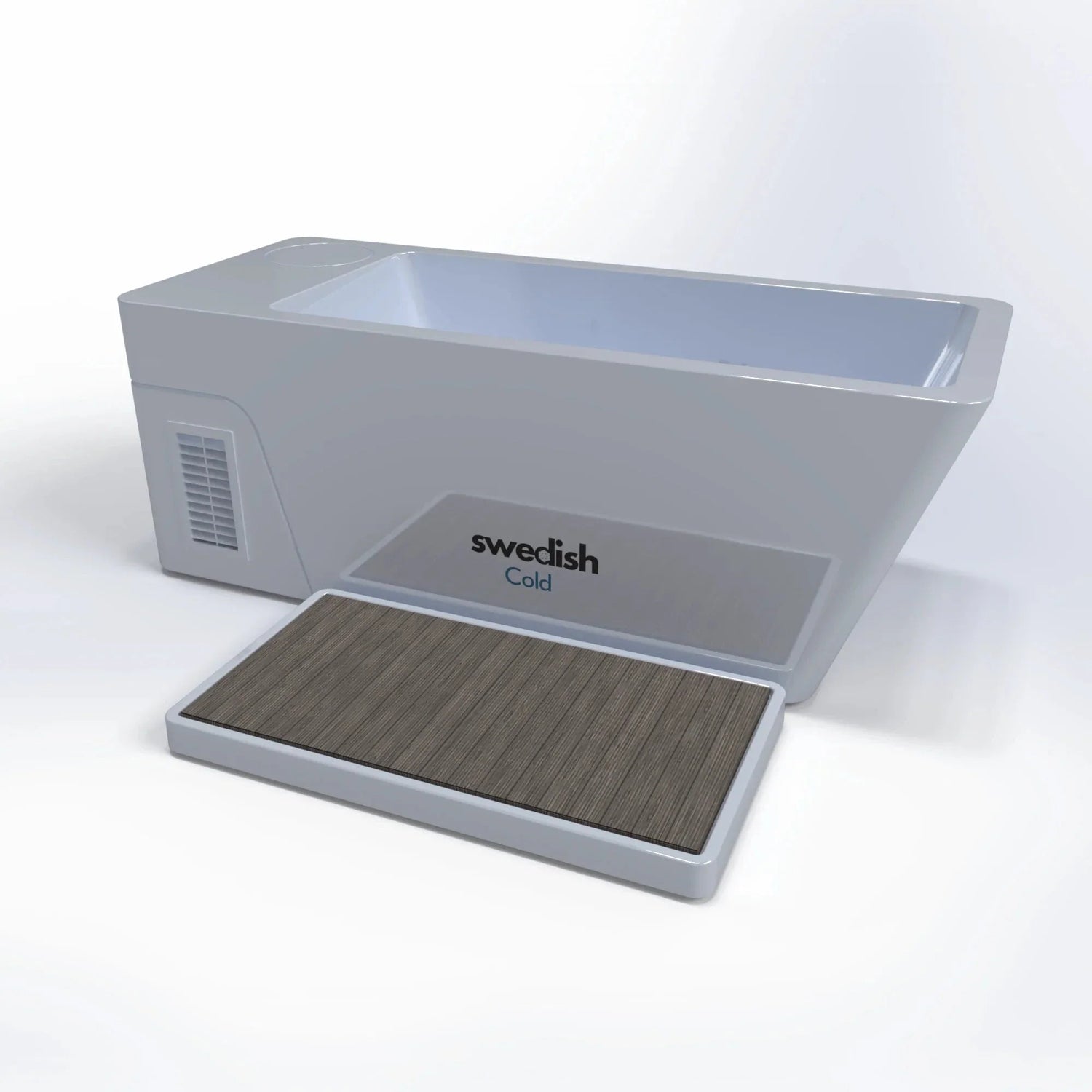Breathing right in a cold bath is crucial - it's the breathing exercises that determine how long you can actually stay seated. It's not about willpower or physical strength. It's about being able to regulate your body in the cold. With proper breathing, you can take control, reduce stress and even enjoy the icy water.
In this blog post, we focus entirely on the theme Cold baths & breathing exercises. How they are connected, what you should do before, during and after - and why breathing is key to both physical and mental effects.
The body's reaction to cold water - no wonder it feels like a shock
When you step into freezing water, your body triggers a pure survival response. It's not something you choose - it just happens:
-
Your heart is racing - your pulse is racing.
-
Blood vessels constrict - especially in the skin and arms/legs, to protect the internal organs.
-
Breathing becomes rapid - often resulting in panting or even hyperventilation.
All this is perfectly natural. Your body thinks it's in danger and tries to save you...
But here comes the interesting part:
With the right breathing technique, you can actually control how strongly the body reacts. That's why cold baths and breathing exercises often go hand in hand - you train the body to deal with stress, both physically and mentally.
Preparatory breathing - before the bath
Breathing correctly before going into a cold bath is crucial - it's about preparing your body so that it doesn't trigger a full stress response. When you breathe calmly before the bath, you activate the parasympathetic nervous system - the body's 'calm mode'. This reduces the shock, keeps your heart rate down and means you're much more likely to stay calm when you come into contact with the cold.
Taking control of your breathing even before you get into the bath is smart. It prepares your body mentally and physically. Here's how to do it:
-
Stand or sit calmly
-
In through the nose for 4 seconds
-
Hold your breath for 2 seconds
-
Out through the mouth for 6-8 seconds
Do this for 3-5 breaths. Feel your heart rate go down and your body prepare itself. Now you are ready.
Wim Hof breathing - powerful preparation before cold baths
This technique combines deep breathing with breath retention. It makes the body calm, focused and oxygenated. It is perfectly suited before going into a cold bathbut should never be done in the water.
This is how you do it:
-
Take 30 quick, deep breaths: in through the nose or mouth, out without squeezing
-
On the last exhalation - hold your breath as long as you can (without pushing)
-
When you need to breathe - take a deep breath and hold for 15 seconds
⚠️ Never do Wim Hof breathing in or near water - there is a risk of fainting and losing consciousness (shallow water blackout).
Wim Hof breathing is thus a powerful tool before the bath in order to:
-
Reducing fear
-
Creating focus
-
Making the first cold more manageable
Breathing in the bath - when sitting in the cold
Once you are in cold water, breathing is your anchor. Follow this rhythm:
-
In through the nose: 4 seconds
-
Hold: 2 seconds
-
Out of mouth: 6 seconds
-
Pause: 2 seconds
Do this for 3-5 minutes if you can, but get up if it feels too much.
Breathing helps you:
-
Lowering the heart rate
-
Maintaining calm
-
Focus on the present
You should not lie completely still in cold water. Small movements help the body keep the blood circulation going:
-
Wiggle your toes and fingers
-
Tense and relax your legs and arms
-
Rock back and forth easily
This prevents you from 'freezing' and makes the body perceive the cold as more manageable
Different breathing techniques you can try in the bath:
Box breathing - the square technique
-
Breathe in 4 sec
-
Hold 4 sec
-
Exhale 4 sec
-
Hold 4 sec
Ideal for calm and mental sharpness. Keeps you focused during the cold bath.
4-7-8 breathing
-
In through the nose: 4 sec
-
Hold: 7 sec
-
Out of mouth: 8 sec
Good for severe cold reactions or if panic is approaching. calming effect on the nervous system
Practicing breathing outside the bath
Want to get better at cold bathing? Start by practicing your breathing in everyday life.
-
Take 5 minutes a day
-
Sit quietly and focus
-
Try different methods and feel what suits you
The more you practice in calm environments, the more you benefit once you're in a cold bath
Effects of cold baths & breathing exercises
When you combine cold baths with proper breathing, you get:
-
Increased stress resistance
-
Better blood circulation
-
Better recovery after exercise
-
Improved sleep
-
More mental presence
And the best part? You get to know your body - for real.
Summary - Cold baths & breathing exercises
-
Prepare your breathing before going down
-
Keep the rhythm during the bath
-
Move lightly
-
Practicing breathing daily
Breathing is what makes cold bathing bearable - and ultimately enjoyable.
FAQ - Frequently asked questions about cold baths & breathing
How to regulate breathing in cold water?
By breathing slowly and in a controlled manner. In through the nose, long exhalation through the mouth. Count the length of your breath to help you stay focused.
How to do a cold bath correctly?
Prepare with breathing exercises beforehand, lower your body gradually, keep calm breathing throughout the bath and move lightly. Finish with a warm-up immediately afterwards.
What is the most important thing to consider?
Having a good breathing technique - it's what determines how you cope with the cold. Without proper breathing, bathing becomes a struggle.
Common mistakes - and how to avoid them
-
Hold your breath: Let the breath flow, but in a controlled way
-
Hyperventilating: Focus on slow exhalations
-
Breathe too shallowly: Deep breaths into the belly.
-
Not thinking about breathing at all: It's your most important tool - use it

